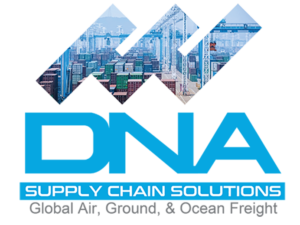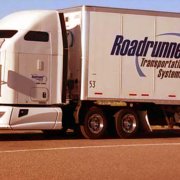Our topic for today is When Will Ocean Freight Rates Go Down. What is the concept of a freight rate? Transport expenses, freight prices, and hauling fees are comparable to shipping rates. A freight rate is a cost associated with transporting a specific type of cargo from one location to another. To be more precise, freight is moving products by vehicles like trucks, trains, ships, or aeroplanes. The shipping cost is determined by the type of cargo, preferred mode of transportation, weight of the cargo (in CBM or TEU), and travel time to the delivery location. A flat rate, often known as fixed pricing, is a way of charging money set at a predetermined amount.
Ocean Freight Trends 2022
Here are some of the shipping trends for 2022:
Increasing Significance of Sustainability
The shipping sector has placed a greater emphasis on sustainability in recent years. Shipping containers are frequently left idle for extended periods, consuming significant port space. Furthermore, shipping ships generate a lot of pollution, such as greenhouse gases and oil spills.
According to the World Economic Forum, the shipping sector is the sixth largest worldwide emitter of CO2, with annual emissions from shipping vessels accounting for about 3% of emissions. Maersk, Mediterranean Shipping Company (MSC), and CMA CGM S.A., the top three container shipping corporations, are responsible for up to 80% of the emissions in the sector.
As a result, a lot of businesses are currently trying to figure out how to make shipping more environmentally friendly and cut down on emissions, including items like:
- Utilizing greener fuels like biofuel and hydrogen cells
- Purchasing eco-friendly shipping supplies
- cutting down on the number of empty containers
- building cargo ships and green maritime transportation vessels
Read all about top asset-light transport and logistics service provider losing its ground. If interested read “What Happened to RRTS“?
The popularity of Intermodal Shipping
Intermodal shipping is a means of transport that transfers cargo between different modes. Transporting trailers or containers on flatcars is known as piggybacking, the most popular type of intermodal shipping.
Even though intermodal transportation has been around for a while, its popularity has increased recently for several reasons:
- Because of the sharp increase in gasoline prices, rail freight is now more economical than road freight.
- Green transportation choices are becoming more popular due to traffic and pollution concerns.
- For businesses that wish to avoid the delays and disruptions associated with air travel, intermodal shipping is a desirable choice because of security concerns resulting from the Russia-Ukraine War and other instability.
Read and learn all about What Is Intermodal
Increase in Blockchain Use in the Logistics Sector
Recently, there has been pressure on the logistics sector to improve efficiency and cut costs. There has also been an increasing demand for increased traceability and openness throughout the supply chain.
By building a shared, impenetrable database of data that can be viewed by all parties engaged in a transaction, blockchain technology can solve these problems.
It would eliminate the need for pricey inventory management systems by enabling real-time monitoring of deliveries and shipping lines. Many of the operations presently carried out by humans, such as determining the terms of payment or confirming the legitimacy of papers, might become automated with the help of blockchain-based smart contracts.
Effects of autonomous vessels
Self-driving ships are already a reality, not just a sci-fi concept. Autonomous ships are becoming a reality with artificial intelligence and sensing improvements. Self-driving ships have the potential to increase safety, productivity, and environmental protection, among other advantages.
There are, nevertheless, certain possible hazards. Self-driving ships may hasten the trend of declining maritime jobs, which are already declining due to automation. Because autonomous ships rely on digital navigation systems, cyberattacks are also dangerous. The possibility of crashes is another issue, as self-driving ships might not react as rapidly as human-driven ones.
Growth of Mega-Ships
Megaships are enormous cargo ships with a capacity of 20,000 TEU (twenty-foot equivalent units). Due to their effectiveness and cost savings on a larger scale, these ships are becoming more and more popular.
Megaships are a popular choice for logistics organizations since they have decreased shipping costs by around a third over the past ten years.
Mega-ships do, however, have a few drawbacks:
Megaships need specialized facilities, such as deep-water harbors and equipment that can accommodate their size. Megaships can only come in a few ports along the Western Seaboard.
Read all about Trends Freight Forwarding Industry
When Will Ocean Freight Rates Go Down | Ocean Freight Rate Forecast 2023
According to research, the maritime freight sector will have a “very tough” 2023 after more than two years of escalating pricing and overstretched capacity. Expert trend estimates and a thorough examination of the most current real-time ocean freight rates point to a potential 2.5% decline in ocean cargo volumes, a “substantial” decline in rates, and increased vessel idle due to weak demand.
Read all about Ocean Freight Rate Forecast 2023
Will freight rates go up in 2023
We anticipate seeing big reductions. Carriers have demonstrated their ability to defend and raise prices during COVID. Still, in 2023, with too much capacity and less port congestion, they will be fighting losing battles on the most important trade routes. During the first half of 2023, spot prices on several important corridors may fall under pre-pandemic rates, while long-term rates will decline quickly as older, more costly contracts expire and new, much cheaper contracts are present. However, throughout the first half of 2023, long-term rates won’t fall below spot rates.
Read More:
Ocean Freight Market Outlook 2022-2024
Bill of Lading Rules and Regulations
Intermodal Transportation Advantages and Disadvantages










